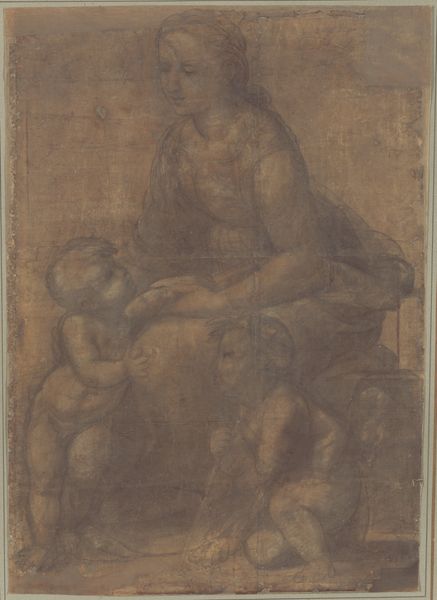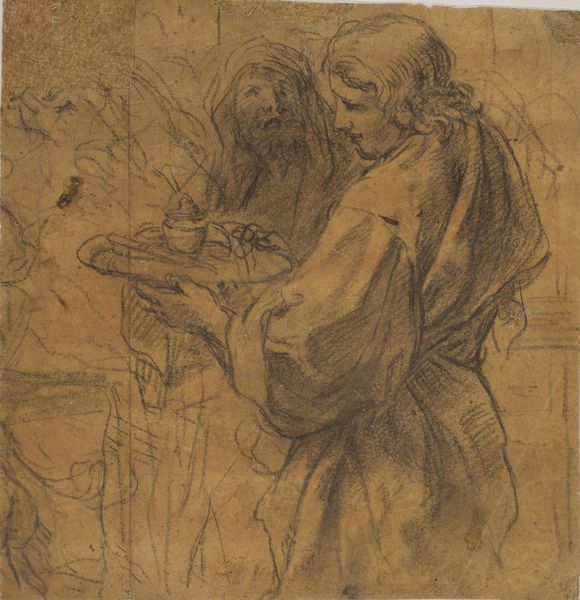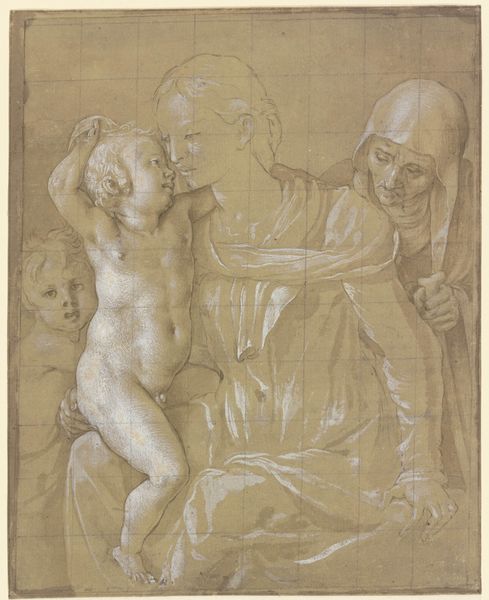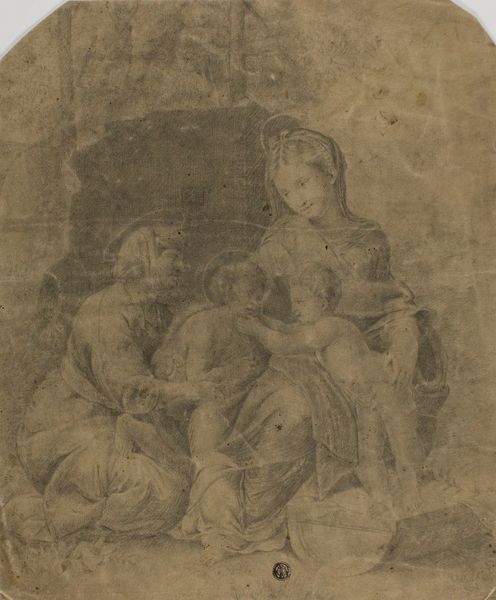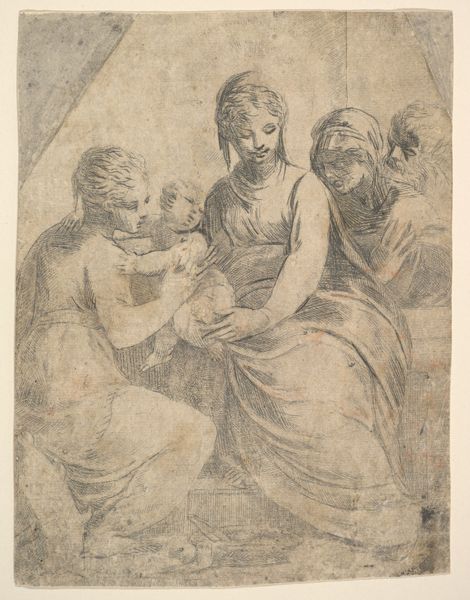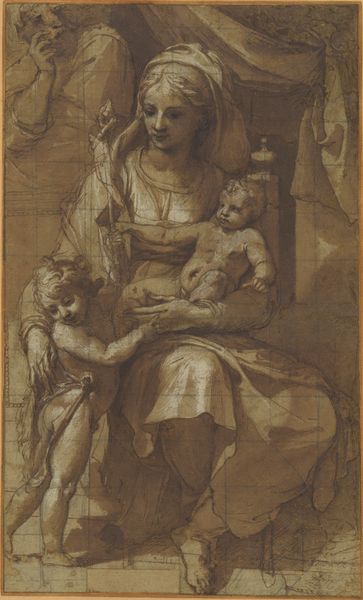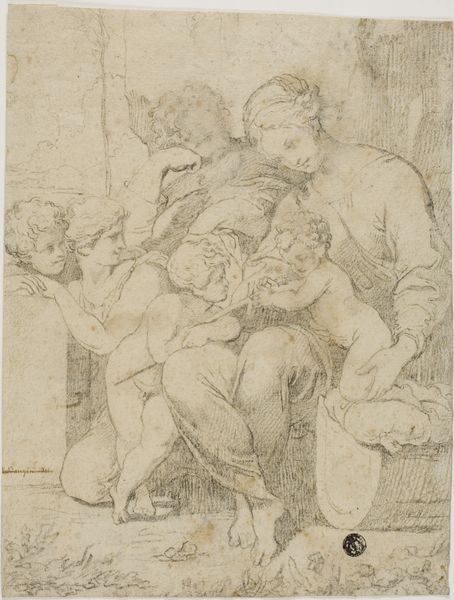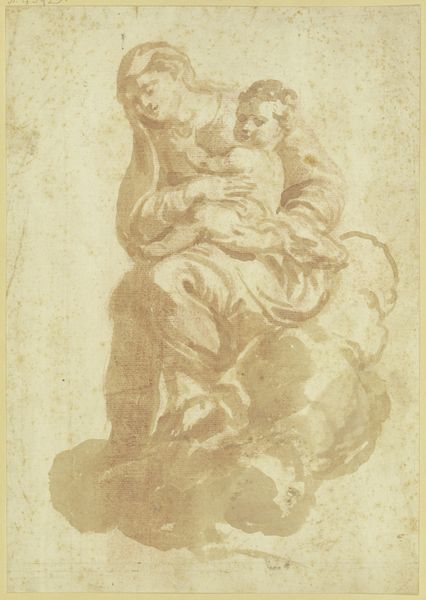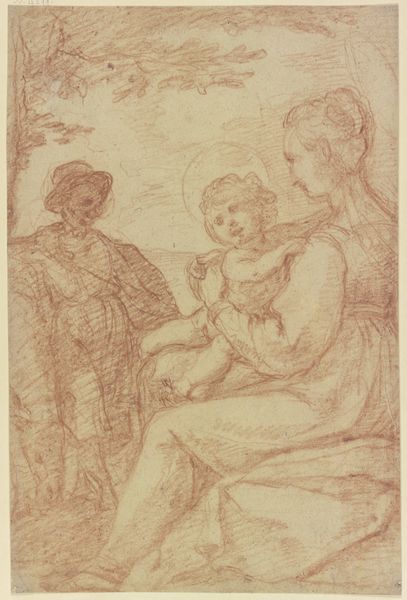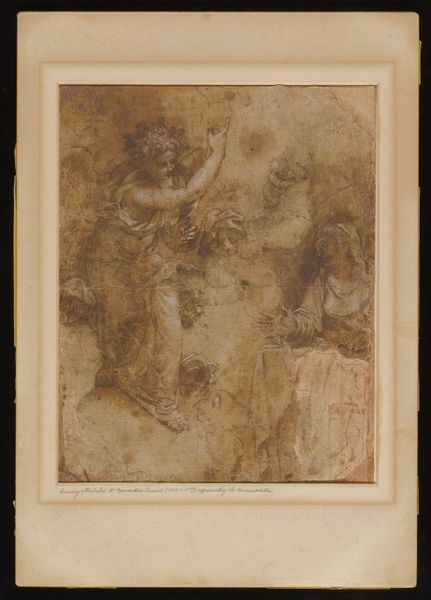
The Virgin and Child with Saint Anne and Saint John the Baptist 1499
0:00
0:00
drawing, charcoal
#
portrait
#
drawing
#
figuration
#
11_renaissance
#
jesus-christ
#
child
#
christianity
#
charcoal
#
charcoal
#
italian-renaissance
#
virgin-mary
Dimensions: 104.6 x 141.5 cm
Copyright: Public domain
Curator: Ah, a drawing by Leonardo da Vinci titled "The Virgin and Child with Saint Anne and Saint John the Baptist", created around 1499. It’s a piece rendered in charcoal and touches of chalk. Currently, it resides in the National Gallery in London. Editor: My initial feeling is one of serene intimacy. The figures are so tenderly interwoven, there’s a real sense of familial warmth, despite it being a preliminary sketch. The subtle gradations of tone create such depth. Curator: It’s interesting how the composition reinforces established hierarchies. Mary, Jesus and Anne, occupy the space above the younger John the Baptist. The implied message certainly plays well to Renaissance patrons wishing to be seen as upholding the status quo. Editor: Agreed. But John the Baptist is, symbolically, the bridge. Da Vinci often places symbols carefully. It's hard not to see him there at the intersection of lineages and histories. His presence foreshadows events and draws those narratives into alignment. That said, my eye is really drawn to the unfinished aspect of the work. It's as though Da Vinci is inviting the viewer into the creative process. Curator: Precisely! Da Vinci's patronage constantly fluctuated, impacting what he could actually finish, of course. Incomplete pieces reveal workshop practice. His practice helped define a High Renaissance style admired and copied by peers and pupils. I’d argue the accessibility of his work really benefited from his status. Editor: I find that intriguing. The iconography is well established but there are more elemental meanings. Saint Anne was typically invoked for a long and fruitful life. She also appears as the patron saint of unmarried women wanting a husband! In Da Vinci's work, this becomes intertwined to communicate hope through familial bonds. Curator: That intermingling of sacred figures within familiar roles of the mother and grandmother shows Da Vinci's knack for making religious themes more approachable to audiences. Editor: The faces, especially Mary’s, offer insight into Da Vinci’s exploration of psychological depth, particularly the theme of motherhood. Ultimately, what stays with you is Da Vinci's exquisite ability to convey deep emotion through simple forms. Curator: Absolutely, and this piece offers so much information about both his methods and the cultural values he was immersed in and which his output helped shape for future generations.
Comments
No comments
Be the first to comment and join the conversation on the ultimate creative platform.
